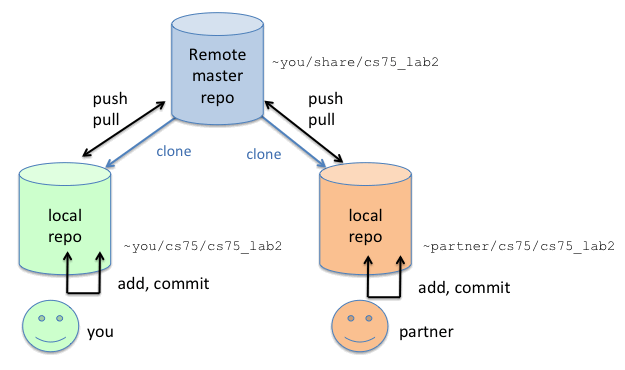

- #NOT A GIT REPOSITORY GIT ADD REMOTE HOW TO#
- #NOT A GIT REPOSITORY GIT ADD REMOTE CODE#
- #NOT A GIT REPOSITORY GIT ADD REMOTE PLUS#
- #NOT A GIT REPOSITORY GIT ADD REMOTE FREE#
Then, ignore the rest and click on the create repository button. Set the project to public or private, depending on what you want. The description provides details so other people can understand your project. To create a new repository, you need to give your repository a name.
#NOT A GIT REPOSITORY GIT ADD REMOTE PLUS#
Click on this plus button and select “new repository.” Once you sign in, you’ll see a plus (+) button on the right-hand corner of the page.

Create an account if you don’t have one already. The other services follow the same instructions.
#NOT A GIT REPOSITORY GIT ADD REMOTE HOW TO#
This article shows you how to set up a remote on Github. If you want to create a private repository on Github, you need to pay $7 a month. They let you create private repositories for free. If you want to create private repositories, you might want to consider Bitbucket or Gitlab. A private repository is a Git repository that can only be read by you and the people you give permission. Sometimes you may want to create private repositories. (Note: open source projects can also be hosted on Bitbucket and Gitlab as well). This is also why most open source projects are hosted on Github.

Many people like to use Github because Github is the most popular one out of the three. The only differences between the services are their popularity, web interface, and pricing. There are no differences between these three services where Git itself is concerned. If your computer crashes, you can always get the latest version from the remote back onto your computer.īefore we talk about Git remotes, we have to talk about different services that provide you with Git remotes. In Git terminology, we call the Git repository on your computer a local repository.Ī Git remote is the same repository stored somewhere else on the internet.
#NOT A GIT REPOSITORY GIT ADD REMOTE CODE#
The above command will add a remote that will push code to the repository on SSH port 3234.Note: This the third video in the Git for beginners series. Git Remote Add With Another SSH Port git remote add production ssh:// _address:port/path-to-git-repo/repo.gitĮxample – git remote add production ssh:// :3234/var/repository/lau.git Git Remote Add With Another SSH PortĪs you can see, the custom port needs to be specified while adding the remote. Since port 22 has been modified, we need to specify another port when adding a remote. It means git tried to connect to ssh on port 22. Please make sure you have the correct access rights If you changed the SSH port, the above remote will fail to push code and return the following error – ssh: connect to host 192.168.28.xxx port 22: Connection refusedįatal: Could not read from remote repository. The above command will add a remote named production. git remote add remote_name ssh:// _address/path-to-git-repo/repo.gitĮxample – git remote add production ssh:// /var/repositories/lau.git By default, git requires a server username and IP address to add a remote repository. Git remote addĪfter initializing the local repository, one needs to add at least one remote repository to push code to that remote. To learn more about git, read our Learn Git series. Its lightning-fast performance can transmit the entire application within seconds to the production server, staging server, or a bitbucket repository. It is faster than any other way of transmitting code to a remote location. No matter what project you’re working on, Git can help you manage your code efficiently.
#NOT A GIT REPOSITORY GIT ADD REMOTE FREE#
Git is a free & open-source version control system that almost all developers use today. If the SSH server runs on any other port, the command to add remote will fail with error ssh: connect to host .xx port 22: Connection refuse. By default, the SSH server listens on port 22. In this brief article, you will learn to add a git remote with another SSH Port.


 0 kommentar(er)
0 kommentar(er)
